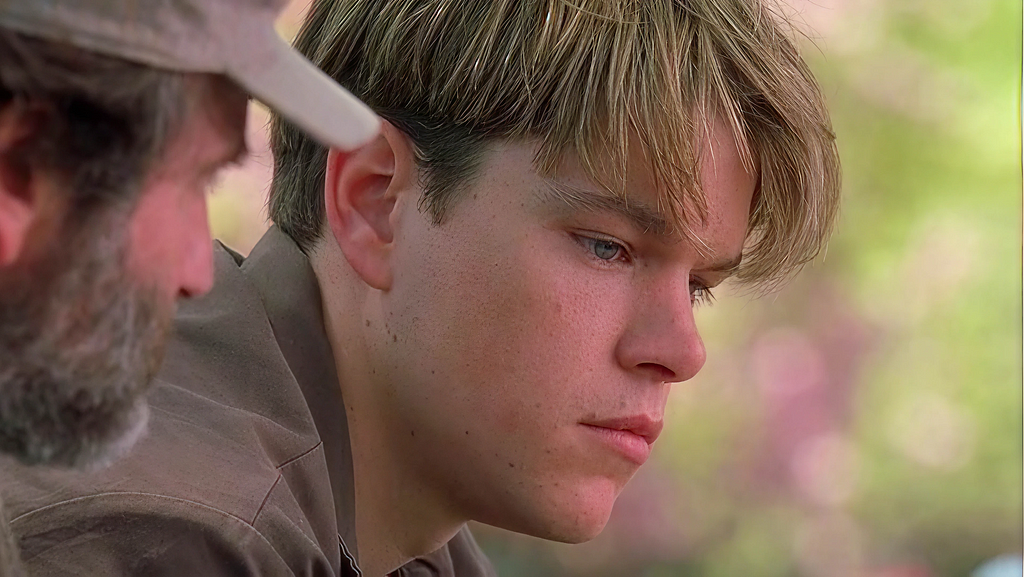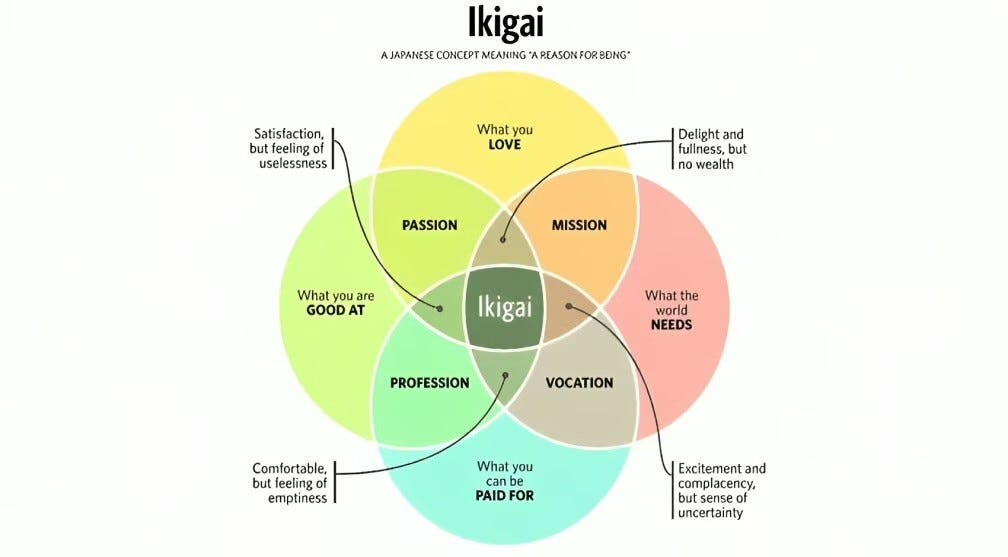The ultimate breakthrough comes when your work aligns with your true self

When I think about one of the recent projects I worked on, a question comes to mind: If I wasn’t getting paid for it, would I still take on this project? Would I dedicate the same level of effort and attention to detail? Is this something I love doing, or am I just good at it?
For all of us in the world of UX design, this question holds particular significance. It not only reflects our attitude towards the profession but also touches upon deeper questions about the meaning of life and the satisfaction derived from the small things we do every day.
Today, I decided to share with you how I find joy in my work as a UX designer and how we can discover the meaning of life by appreciating what we do and the small joys that life offers.
Happiness in and out of work
Imagine you weren’t getting a salary for what you do. It would certainly be much harder to stay motivated, right? But think for a moment — how often do you feel obligated to work on something that doesn’t bring you pleasure, simply because you’re good at it? Many of us fall into this situation — we do things we understand and can execute perfectly, but they don’t excite us. We work for the sake of working. However, this doesn’t lead to true satisfaction.
This is where the concept of Ikigai can be helpful.
Imagine working on a project that not only meets client needs but also brings you joy, combines your skills, and aligns with your inner mission. That is true satisfaction — doing something you’re not just good at, but that also brings value to the world around you.
What is Ikigai?
Ikigai (生き甲斐) is a Japanese concept related to finding meaning in life. It is the reason we wake up in the morning with enthusiasm. Although the concept has deep roots in Japanese culture, it is universal and applicable to anyone, regardless of their profession. Ikigai comes from two Japanese words:
“iki” (生き) — means “life” or “to live”.
“gai” (甲斐) — means “value”, “reason”, or “worthwhile”.
It is a philosophy of balance and harmony that connects four main aspects of life:
- What you loveWhat you are good atWhat the world needsWhat you can be paid for

When these four elements overlap, they create the ideal balance known as Ikigai — your personal “reason for being”.
The original Japanese concept of Ikigai does not include the Western visualization with diagrams popular today. The Venn diagram that connects the four areas (love, skills, needs, and paid work) is a modern interpretation, adapted for a Western audience to make the idea more structured and easily understandable.
Japanese Approach
In traditional Japanese culture, Ikigai is perceived more abstractly and is not graphically represented. Instead, it is seen as a personal path or an inner sense of meaning and purpose in life. Japanese texts and philosophical studies explain Ikigai through stories, poetry, or practical examples, rather than diagrams.
In modern Japan, the explanation of Ikigai is often associated with:
- Conversations with mentors and teachers to find direction.Zen philosophy and the feeling of presence and satisfaction in small things.Longevity and balance, especially in places like Okinawa, where people live in harmony.
History and Modern Interpretation of Ikigai
The concept of Ikigai is not new. It has historical roots in Japanese culture and philosophy, often associated with Zen Buddhism and the philosophy of resilience. Although the idea has existed for centuries, it began gaining popularity in the Western world in recent decades, becoming part of the psychology of personal development and longevity.
The idea of Ikigai is not just a philosophy, but a way of life. For example, in the Japanese prefecture of Okinawa, known for its centenarians, local residents often share that Ikigai is the key to a long and happy life. They wake up each day with a sense of purpose, striving for something important, and finding joy in the small things.
How to Find Ikigai in Our Work as UX Designers?
Pursuing Ikigai doesn’t just mean discovering your passion in your job. It is a process of discovery that begins with the questions:
- What do I love doing?What am I good at?What is the world around me and what do I have to offer?
For us, UX designers, this might mean re-examining our work and asking ourselves: are we doing something that truly inspires us, or are we just doing “the job”? Often, it seems we are working within a specific framework because that’s how it’s supposed to be. But if we can find a way to express our passion and transfer our talent and skills to projects we truly enjoy, the work will become more meaningful, and we will enjoy the process.
How Children are Taught to Find Ikigai in Japan
In Japan, the concept of Ikigai is explained to young children in a simpler and more practical way, focusing on the joy derived from small things and discovering what makes them happy and useful. Teachers use various approaches to encourage children to find their own Ikigai from an early age.
- Stories and fairy tales — Teachers and parents often tell stories where characters find their “reason to live” by discovering joy in their favorite activities or helping others. The focus is on personal value and connection with the world around them.Everyday examples — Children are asked questions like: “What do you love doing most?” “What makes you feel happy?” “What do you do when you help your friends or family?” This helps children realize which activities bring them joy and make them feel useful.Discovering the “small Ikigai” — Children learn to appreciate the small things in life: playing outdoors, drawing, taking care of nature or a pet, helping in the family or classroom.Art and creativity — Teachers often encourage children to draw, write, or make collages related to the things they love and that bring them joy. This is a visual way for young children to understand what is important to them.Zen approach — enjoying the moment — Young children are taught to pay attention to the present moment — for example, the joy of looking at flowers, listening to birds, or playing with friends.
In reality, Ikigai is explained to children through simple questions, real examples, and stories that teach them to find joy in small things and appreciate the feeling of usefulness and happiness in their daily lives.
The Joy of Small Things
Ikigai is not limited to big projects and the fundamentals of life. It’s important to remember that it is also found in the small things. The opportunity to work with colleagues, to help new people in the industry, to participate in communities like UX Bulgaria — all these small joys create deep satisfaction. Perhaps you’ll feel happy just by helping someone discover something new in design or by sharing an interesting resource. Small things make a big difference.
It doesn’t matter if our work involves big projects or small tasks — what’s important is to feel satisfied and to do something that brings us joy. In every step of the process, we can discover our Ikigai by focusing on what we love and what we are good at.
In Conclusion…
As UX designers, we have the opportunity to change the world through our work, but we also need to connect with ourselves and the meaning of life. The most important thing we can do is to find joy in what we do and find a way to appreciate the small things around us. This is the key to true satisfaction and achieving Ikigai — not only in work, but in life as a whole.
Let’s be inspired by the concept of Ikigai and not forget to enjoy the path we walk as designers, and every small success we find along the way.
Being good at what you do is by no means enough to be happy

Just as there are no perfect people or perfect relationships, there is no perfect job. The important thing is not to look for the perfect, but to find what is perfect for you.
As Sean, the character played by Robin Williams in “Good Will Hunting” (1997), also starring Matt Damon and Ben Affleck, says:
You’re not perfect, sport, and let me save you the suspense: this girl you’ve met, she’s not perfect either. But the question is whether or not you’re perfect for each other.
I recommend the movie. It’s a touching story about a defiant young man who struggles to find his identity, living in a world where he can solve any problem except the one brewing deep within him, until one day he meets his soulmate, who opens his mind and heart.
Tip: Seek your Ikigai — even in small moments. Start enjoying what you do and the path you are on.
And me…? I am happy to know you!
Maybe you’re perfect right now (as a UX designer) was originally published in UX Planet on Medium, where people are continuing the conversation by highlighting and responding to this story.

